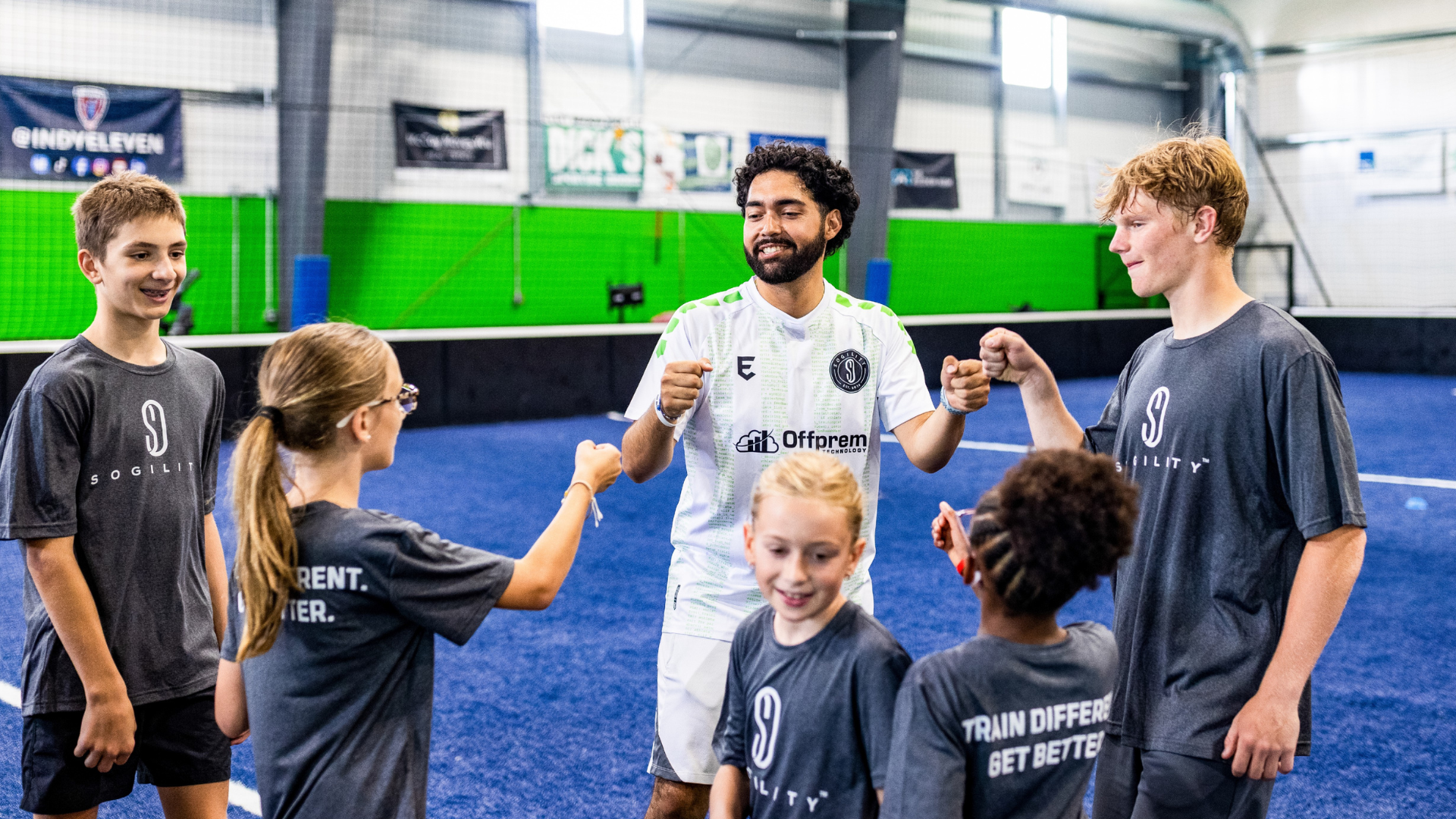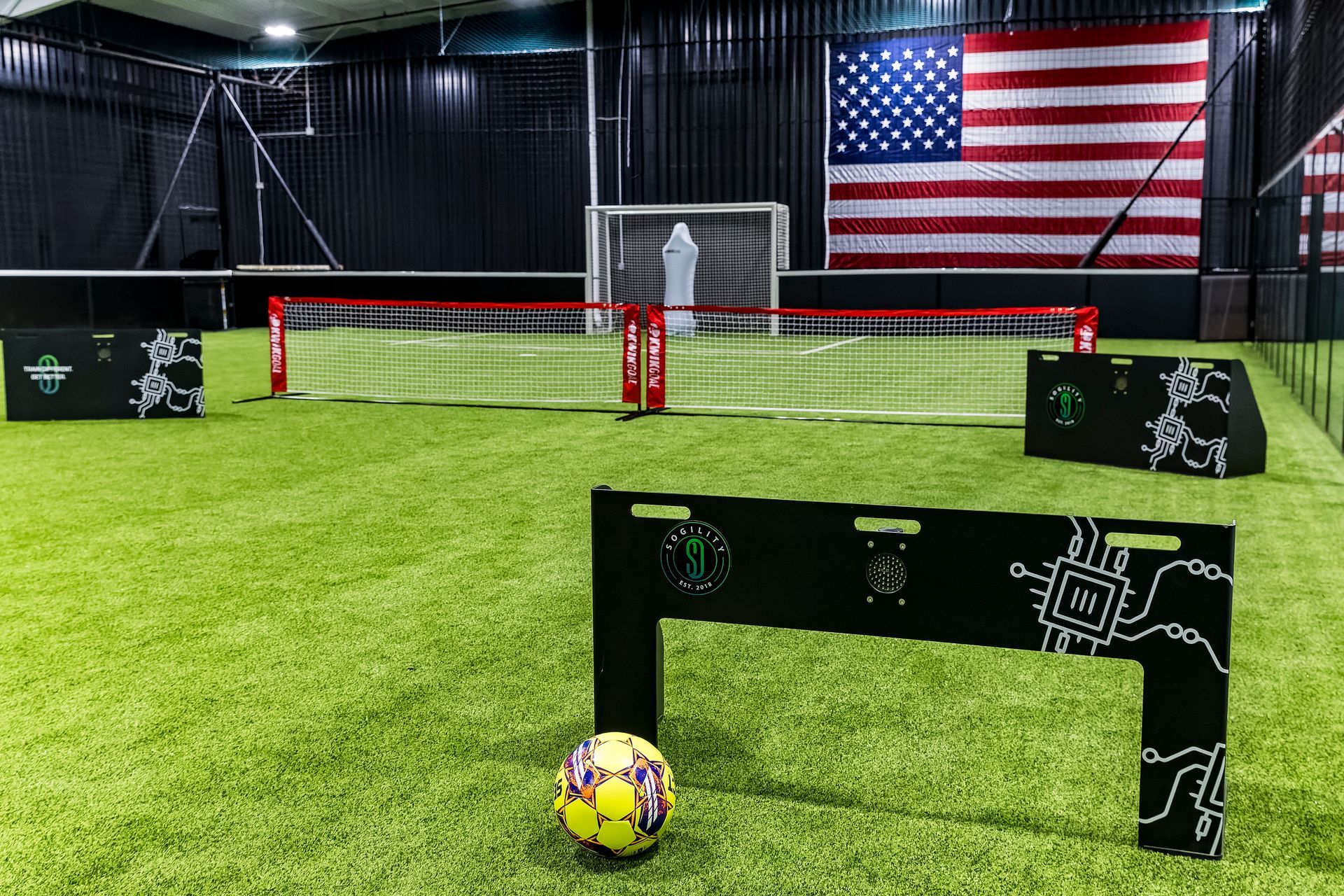October 4, 2023
Passing Precision and Vision in Soccer
Passing is the heartbeat of soccer. Whether it’s a short, crisp ball to a teammate nearby or a long, majestic pass that splits the defense, a player’s ability to pass accurately and with vision is pivotal to the success of any team.
The Importance of Precision
Precision in passing involves delivering the ball exactly where it needs to be, at the right time, and with the right amount of power. It’s about hitting your target consistently, regardless of the distance or the conditions on the field. A precise pass not only maintains possession but also creates scoring opportunities and builds team cohesion.
Drill 1: Target Passing
One effective drill to develop precision is “Target Passing.” Set up cones or markers on the field, creating a grid. Players must pass the ball to a specific target within the grid. Start with short distances and gradually increase the range as players improve. Emphasize accuracy over power, and encourage players to use different parts of their foot – inside, outside, and instep – to control the ball’s trajectory.
The Power of Vision
Vision in passing goes beyond just seeing a teammate in open space. It involves reading the game, understanding the positions of all players on the field, and anticipating movements and opportunities before they happen. A player with vision can execute creative and unexpected passes that unlock defenses and create scoring chances.
Drill 2: Visionary Passing
To develop vision, use the “Visionary Passing” drill. Divide the team into small groups and have them play a small-sided game. Emphasize that players must call out the name of the teammate they intend to pass to before making a pass. This encourages players to scan the field, anticipate their teammates’ movements, and make split-second decisions. As players progress, introduce restrictions like one-touch passing or using only specific areas of the field.
Combining Precision and Vision
Now, let’s discuss how precision and vision work in harmony on the soccer field. Imagine a midfielder with exceptional vision, capable of spotting a forward’s run before it even begins. To fully capitalize on this skill, the midfielder must also possess the precision to deliver a pass that meets the forward’s stride, enabling a seamless transition from defense to attack.
Drill 3: Dynamic Passing
The “Dynamic Passing” drill is designed to combine precision and vision. Create scenarios where players need to execute accurate passes under pressure. For instance, simulate a fast-paced counter-attack situation or a congested midfield battle. Players must read the game, make quick decisions, and deliver precise passes. Encourage them to communicate with their teammates, providing clear and early signals of their intentions.
Soccer passing is an art that requires constant refinement. Precision and vision are the twin pillars that support this art, allowing players to orchestrate the game with grace and effectiveness. These drills are not just exercises; they are building blocks towards becoming a better soccer player. They cultivate the ability to think ahead, to see the bigger picture, and to execute passes with unparalleled precision.
For more information on passing precision and vision learn more about Sogilty’s Technical Soccer Zone (TSZ) at sogility.net/tsz-3/.
The post Passing Precision and Vision in Soccer
appeared first on Sogility.

At Sogility, our trainers are more than coaches, they’re mentors, motivators, and role models who help athletes discover their potential. This month, we’re excited to spotlight one of our dedicated Sogility Westfield trainers: Allan Ramirez. A Unique Soccer Journey Allan’s soccer story begins in Mexico City, where he was born and developed an early passion for the game. Unlike many players who rise through traditional youth club systems, Allan’s path looked very different. He only played one year of high school soccer and never played travel or club soccer growing up. Instead, he sharpened his skills in local adult leagues at a young age. His determination and love for the sport propelled him forward, eventually leading him to play semi-pro for multiple seasons and earn opportunities to try out for professional clubs. Allan’s unconventional path is proof that there is no single way to pursue the game, and that passion can take you far.

Holiday breaks can disrupt a player’s rhythm, but they can also be the perfect time to reset, refocus, and make meaningful progress. With the right approach, players can return to winter training sharper, stronger, and more confident—without sacrificing time with friends and family. At Sogility, we believe the holiday period is one of the most underrated training windows of the year. Here’s how to make the most of it. 1. Schedule Quick, Efficient Sessions Training during the holidays doesn’t need to feel overwhelming. Short, intentional sessions are not only easier to fit into a busy schedule, they’re incredibly effective for skill retention. Try aiming for: 3–4 sessions per week 20–30 minutes each Focused work on technique, speed of play, and ball familiarity These bite-sized sessions help maintain sharpness without burning players out. A few minutes of ball mastery or first-touch work done consistently over the break can have a huge impact once formal training resumes. Pro Tip: Pair a quick technical session with a simple fitness component—such as sprints, agility ladders, or core work—to stay game-ready as you enjoy holiday meals and downtime. 2. Take Advantage of Indoor Time Winter weather isn’t always friendly to outdoor training, but the holidays provide excellent opportunities to get creative indoors. You don’t need a full field to develop high-level skills—just a ball and a small space. Great indoor activities include: Focused work on technique, speed of play, and ball familiarityBall mastery (toe taps, inside–outside touches, sole rolls) Footwork ladders or cone patterns to develop agility Quick wall passes to improve first-touch and reaction speed Target passing using laundry baskets, tape squares, or furniture as safe targets Indoor training is especially helpful for developing control, coordination, and quick feet, skills that translate directly to better performance in small-sided play and high-pressure moments. Bonus Idea: Parents and siblings can join in, turning quick sessions into fun family challenges. This keeps training lighthearted and enjoyable during the holiday season. 3. Keep It Fun The holidays are a time to relax, recharge, and reconnect with the joy of playing soccer. Keeping training fun during the break helps players stay motivated and rediscover their creativity. Try adding: Trick-shot or accuracy competitions 1v1 games with friends or siblings Freestyle or juggling challenges Fun play builds confidence and improves problem-solving skills on the field—the type of creativity coaches love to see. Remember: When players enjoy the game, their technical development accelerates naturally. 4. Use Technology to Track Progress One of the biggest advantages of holiday break training is the ability to measure improvement in a short window of time. At Sogility, our tech-enhanced training stations are built for exactly this. With these tools, holiday break doesn’t just maintain your level, it elevates it. Players return to team training with sharper touches, quicker reactions, and increased confidence. Holiday Advantage: Most players slow down during winter break. Using tech-enhanced training gives you a competitive edge heading into winter and spring seasons. Final Thoughts: Make the Holidays Your Growth Season The holiday break is a valuable opportunity, not a setback. With short, targeted sessions, indoor creativity, fun-focused play, and Sogility’s training technology, players can make meaningful progress while still enjoying the season. Final Thought Whether you’re preparing for tryouts, winter league, or spring soccer, staying active during the holidays ensures you return with momentum, not rust.

All You Need in the Game: Master Essential Skills for Better Performance At Sogility, we know that mastering the essential skills of soccer requires more than just physical fitness — it demands speed, precision, sharp decision-making, and mental toughness. That’s why we offer Circuit Training , a revolutionary program that combines cutting-edge technology with innovative drills to prepare players for the fast-paced, high-pressure challenges of real-game play.
